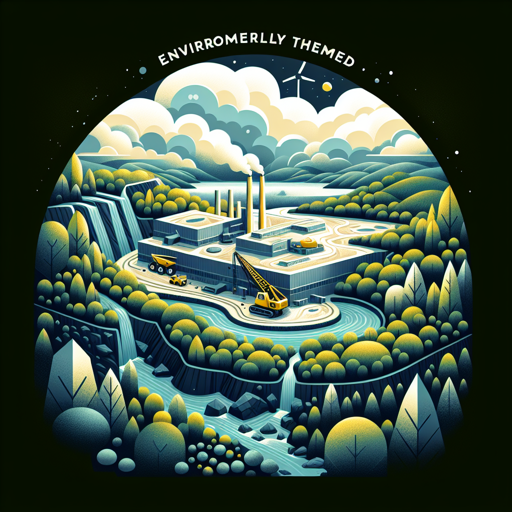Exploring the Environmental Impact of Talc Mining
A comprehensive dive into the ecological consequences and sustainable mining practices of talc.

Introduction
Talc, a soft mineral predominantly composed of hydrated magnesium silicate, is a versatile commodity used across numerous industries, from cosmetics to ceramics. However, behind its silky touch and pearly luster, lies an often overlooked environmental impact. This article aims to shed light on the environmental consequences of talc mining and encourage discussions on sustainable mining practices.
The Environmental Impact of Talc Mining
Landscape Disruption
One of the most apparent impacts of talc mining is the alteration of the landscape. Large-scale excavation, deforestation, and dumping of waste materials can significantly disrupt the natural habitat, potentially endangering local flora and fauna.
| Landscape Features | Impact of Talc Mining |
|---|---|
| Natural habitat | Destruction |
| Water bodies | Pollution |
| Topsoil layers | Erosion |
| Surrounding flora | Deforestation |
| Surrounding fauna | Displacement |
Water Pollution
Water bodies near mining sites often suffer from contamination. Talc mining can lead to the release of harmful substances, such as diesel and dust particles, into the water, posing severe threats to aquatic life and compromising the quality of water for local communities.
Air Pollution
Air pollution is another significant concern. Mining activities can release dust and fine particles into the air, contributing to local air pollution. This not only impacts the health of local communities but can also contribute to broader issues such as climate change.
“We do not inherit the earth from our ancestors; we borrow it from our children.” - Native American Proverb
Sustainable Practices in Talc Mining
The environmental impact of talc mining underlines the need for more sustainable practices. Minimizing landscape disruption, implementing strict water and air pollution control measures, and promoting post-mining rehabilitation are crucial steps towards a more sustainable future.
Rehabilitation of Mining Sites
Rehabilitation involves restoring the mining sites to their natural or economically usable states. This includes reforestation, soil stabilization, and restoring aquatic habitats.
Strict Pollution Control
Strict pollution control measures should be implemented to minimize the release of harmful substances into the surroundings. Regular monitoring and stringent regulations can help control water and air pollution.
Minimizing Landscape Disruption
Minimizing landscape disruption involves careful planning of mining operations to limit the extent of excavation and waste generation. This can be achieved through advanced mining techniques and rigorous environmental impact assessments.
Conclusion
Talc mining, like all mining activities, has significant environmental implications. As we continue to rely on these precious resources, it becomes imperative to balance our needs with the health of our planet. Through sustainable mining practices and mindful consumption, we can strive for a future where economic growth and environmental preservation coexist harmoniously.
To learn more about the environmental impact of mining and sustainable practices, visit The Environmental Literacy Council.